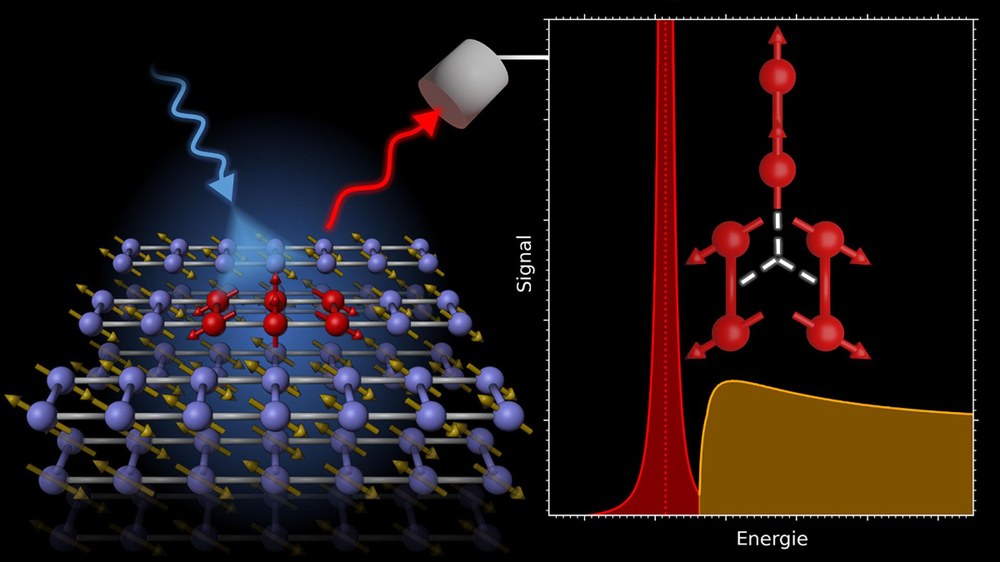Two particles? Three particles!

- International team finds magnetic three-particle state in high-temperature superconductor.
- Binding force of particles differs from previously known mechanisms.
- X-rays should provide experimental proof.
- Discovery could be a basis for topological quantum computers considered resistant to decoherence.
- Focus: Digitalisation, quantum mechanics, quantum computing, technology, fundamental research
In its simplest form, two charged particles that either repel or attract one another are enough to explain the world. Molecules and large solids, for example, are based on this physical interaction between an ion and an electron. Now, researchers have discovered a three-particle state – or more precisely, they have predicted its existence in a special material. The researchers from the German Aerospace Center (Deutsches Zentrum für Luft- und Raumfahrt; DLR), TU Dortmund University and the Los Alamos National Laboratory have also shown that X-rays could be used to detect this three-particle state in an experiment. In the future, their magnetic three-particle state could even evolve into a technology for use in quantum computers.
"The prediction of these three-particle states is crucial because their binding power differs fundamentally from the previously known mechanisms," says Benedikt Fauseweh, Group Leader at the DLR Institute for Software Technology in Cologne. "The discovery increases the probability that we will find even more exotic states, such as entire strings of magnetic excitations." The strings could later be 'linked' to qubits – the computational building blocks of quantum computers. The information would be stored in the individual strings and the computing operations would then be carried out by braiding the strings. These braids are exceptionally stable in the quantum world. That is why topological quantum computers based on this fundamental idea are considered resistant to external perturbation, and this presents an advantage over other quantum computing technologies.
New insights into quantum materials and superconductivity possible
The researchers spent two years calculating the three-particle states in high-temperature superconductors. This class of materials, based on copper oxides, has only been known since the 1980s and has properties that are still not entirely understood (see info box below). The current research results were published in the scientific journal Communications Physics and included instructions on practically demonstrating the states using X-ray experiments that should make the three bound particles visible. "The X-rays are absorbed by the material and transfer energy to the atoms. If a three-particle state is generated in the process, it is possible to measure a particularly strong scattering of the radiation," says Benedikt Fauseweh.
The three-particle states are also highly interesting for fundamental research. The successful detection of these structures using X-rays would present a promising experimental opportunity to learn more about quantum materials. It would also make it possible to observe the possible effects of this strong bonding on high-temperature superconductors. "It would be exciting, for example, to learn that the three-particle states have a significant influence on superconductivity and its transition temperature," explains Fauseweh.
High-temperature superconductor
Superconductors are materials that conduct electricity without any resistance. To do this, they must be cooled below their very low 'transition temperature'. Below this temperature, a system is dominated by quantum mechanical effects. Materials such as liquid helium at minus 269 degrees Celsius are used for this cooling. High-temperature superconductors were first discovered in 1986 by Johannes Georg Bednorz and Karl Alexander Müller. In 1987, the two physicists were awarded the Nobel Prize for this discovery. A much higher typical transition temperature characterises these high-temperature superconductors. They have unusual quantum properties that distinguish them from conventional superconductors. High-temperature superconductors belong to the class of quantum materials and are at the heart of modern solid-state research. The mechanism that leads to superconductivity in these materials is still not fully understood. However, it is known that magnetic excitations play an important role.
